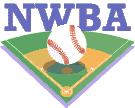| T O P I C R E V I E W |
| Rapid |
Posted - 10/29/2018 : 07:50:44
We all remember when Grandma used to yell at us, “sit up straight” or “fix your posture!” While we all know that it is generally beneficial to have good posture, it turns out that Granny was really onto something regarding wellness and performance! In several posts, I’ve talked about how the position of the rib cage and the pelvis affects how we move, and today I wanted to touch on how this relates to back pain.
Low back pain is a chief complaint people have when they speak to trainers or therapists. While there are a variety of low back disorders with varying symptomatic presentations, posture is often at least part of the problem. So how does that relate to Grandma? Posture isn’t just about sitting up straight at the dinner table. It’s about the POSITION of STRUCTURES. Ever heard of Anterior Pelvic Tilt (APT)? It’s a “hot topic,” and a loose term thrown around gyms everywhere. What does it really mean? APT is characterized by the ilium (one of your hip bones) tipping forward, and typically presents as a “butt out” posture. Imagine your belt buckle being aimed at the floor. As the pelvis tips forward, the hamstrings, which attach at the bottom of the pelvis, are going too. This is going to put them on stretch, which by default puts the front muscles (hip flexors) in a shortened position.
Though a simple concept, the implications from an excessive anterior pelvic tilt can be quite uncomfortable, and usually results in extension based back pain. There are a multitude of muscles and bones that rely on the pelvis as the “mother ship” to work properly. For example, in the sagittal plane (moving forward and backward), the femur moves on the acetabulum (hip socket) to create hip extension. Remember the thought of the belt buckle constantly aimed at the floor? If the pelvis is tipped forward and the hip socket isn’t in an optimal position, then how in the world is the femur supposed to go anywhere you might ask? Compensatory lumbar extension. This is movement that isn’t necessarily efficient. Believe it or not though, a lot of great athletes who use this strategy can get by just fine.
BUT, when there is excessive and constant tone with load placed on structures such as erectors and paraspinals, discomfort will present itself. Long story short, these issues often present themselves when the individual lacks the ability to get out of stressful, sympathetic positions. It’s important to remember that APT is a both natural and necessary for locomotion and athletic performance.
Here at Rapid Sports Performance, we believe in looking specifically at the position of pelvis, ribcage, and the movement variability of the limbs that attach to them. This gives us the ability to make decisions about what types of positions people need to assume, and what muscles they need to recruit to help them do so. For example, the hamstrings and the deep abdominals are essential for re-establishing sagittal plane competency of the pelvis and ribcage. The hamstrings are responsible for more than flexing the knee in an open chain (foot not on the ground). One of their other important roles is to posteriorly tilt the pelvis, and to help retract the ribcage. What do you get with proper position of the ribcage and pelvis? Immediate improvement in movement variability, degrees of freedom, and more often than not pain relief! These are the reasons it is so important to pay attention to the exercise technique. As with the other themes in my posts, owning position is the name of the game!
We hope this is helpful! Have a great week, and as always feel free to comment with questions or topic requests!
All the best,
The Rapid Team
www.go-rapid.com
Andrew Gordon, MS, CSCS
Andrew.Gordon@go-rapid.com
|
|
|




